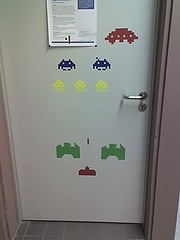 After German phone carrier T-Mobile has recently started selling the unlocked iPhone for the ridiculous price of 999 Euros, now also Orange in France published their price for the unlocked version of the Apple cellphone: 749 Euros. Luckily for Germans, the EU is a customs union, so they can pretty easily order it in France and have it shipped to Germany -- even the higher shipping won't make up for the 250 Euro difference.
After German phone carrier T-Mobile has recently started selling the unlocked iPhone for the ridiculous price of 999 Euros, now also Orange in France published their price for the unlocked version of the Apple cellphone: 749 Euros. Luckily for Germans, the EU is a customs union, so they can pretty easily order it in France and have it shipped to Germany -- even the higher shipping won't make up for the 250 Euro difference.
I also hope that the court which ordered T-Mobile to sell the phone unlocked (still a temporary injuction, IIRC) will follow up and make them sell it for a realistic price eventually. Right now, my guess is that the hefty price tag can not be considered effectively complying with the court order. Yet, even with the current price, some competitors start taking advantage of the situation: T-Mobile competitor Debitel (well, sort-of-competitors, they are resellers for carriers such as, you guessed it, T-Mobile) started handing out a 600 Euro signup rebate for people buying the iPhone over at T-Mobile and subsequently getting a contract at Debitel. Interesting.
On other news, German grocery store chains are still selling the (aging but still pretty good) Motorola RAZR for little more than 100 Euros, unlocked and without a contract.
(Image CC by-nc-nd licensed by Graft Flo on flickr).


 On our neverending bug journey though Leopard land, here we go with the next episode: X11.app in connection with the
On our neverending bug journey though Leopard land, here we go with the next episode: X11.app in connection with the  (Yes, Papierkorb is the German word for "paper bin").
(Yes, Papierkorb is the German word for "paper bin").